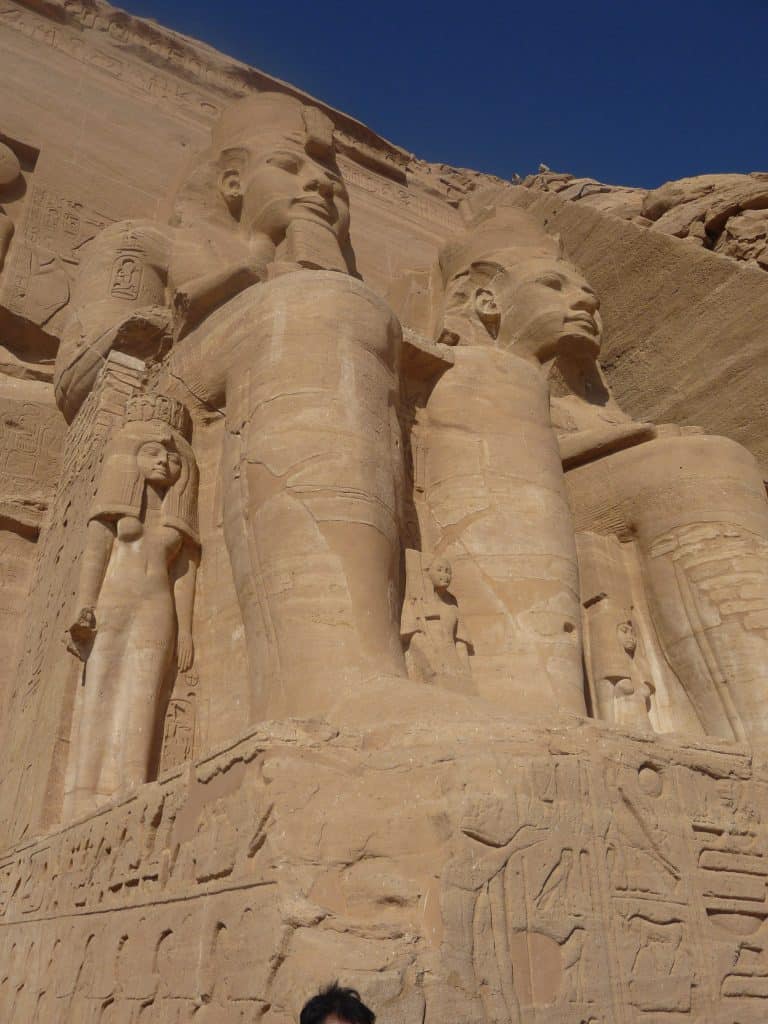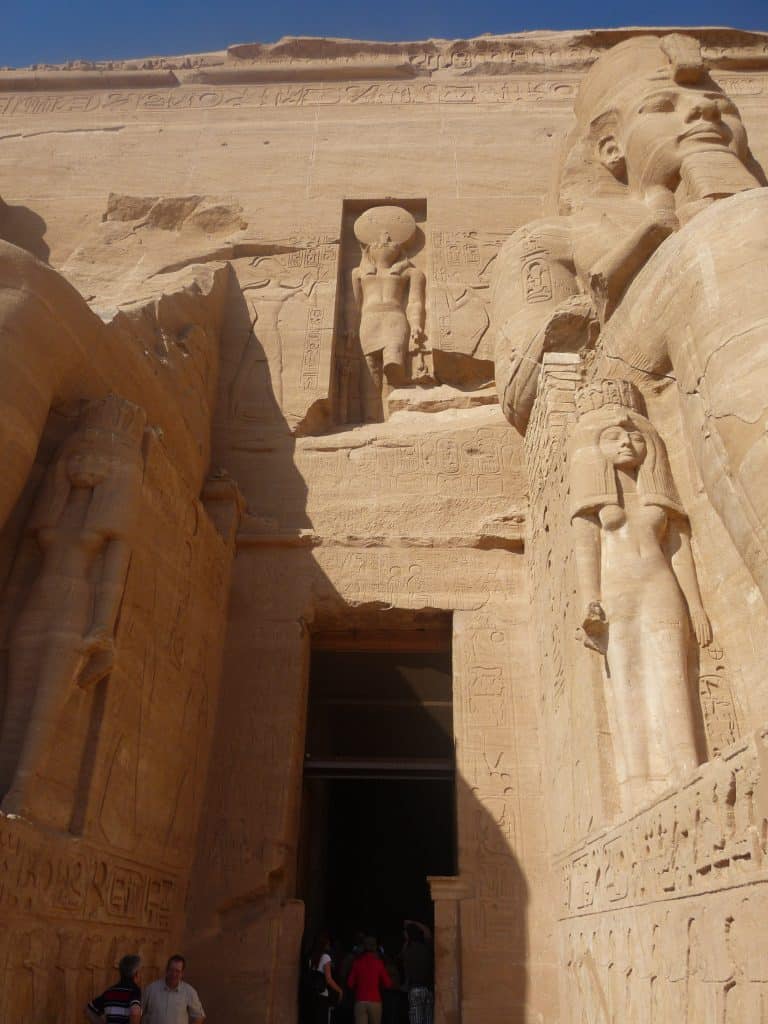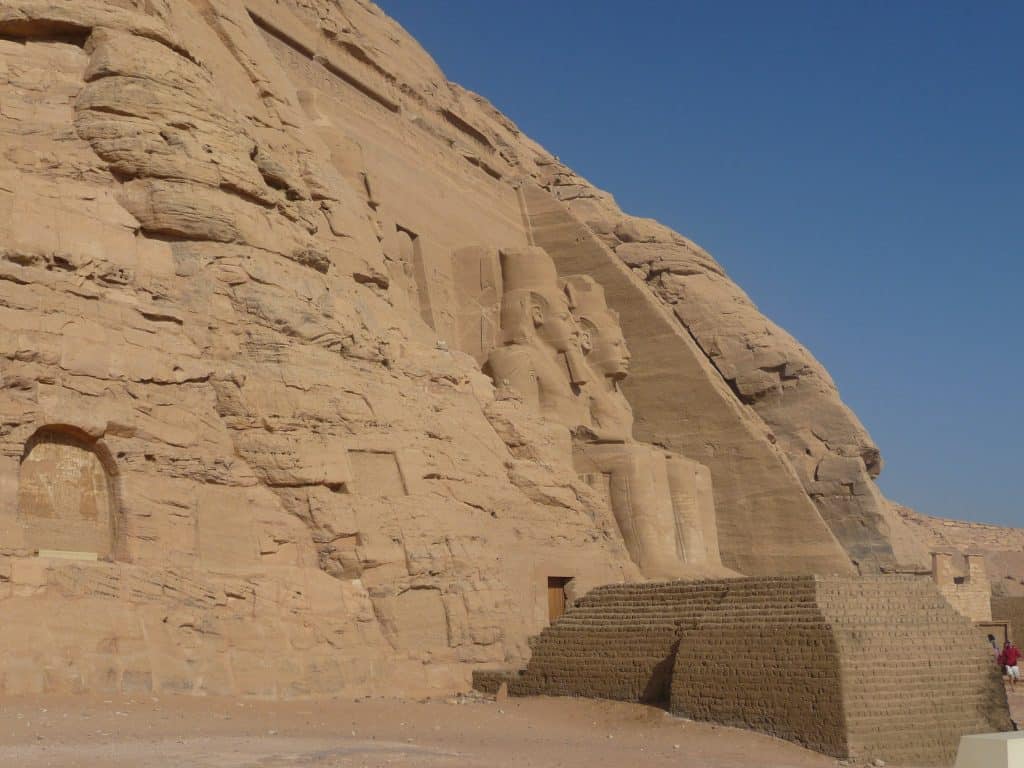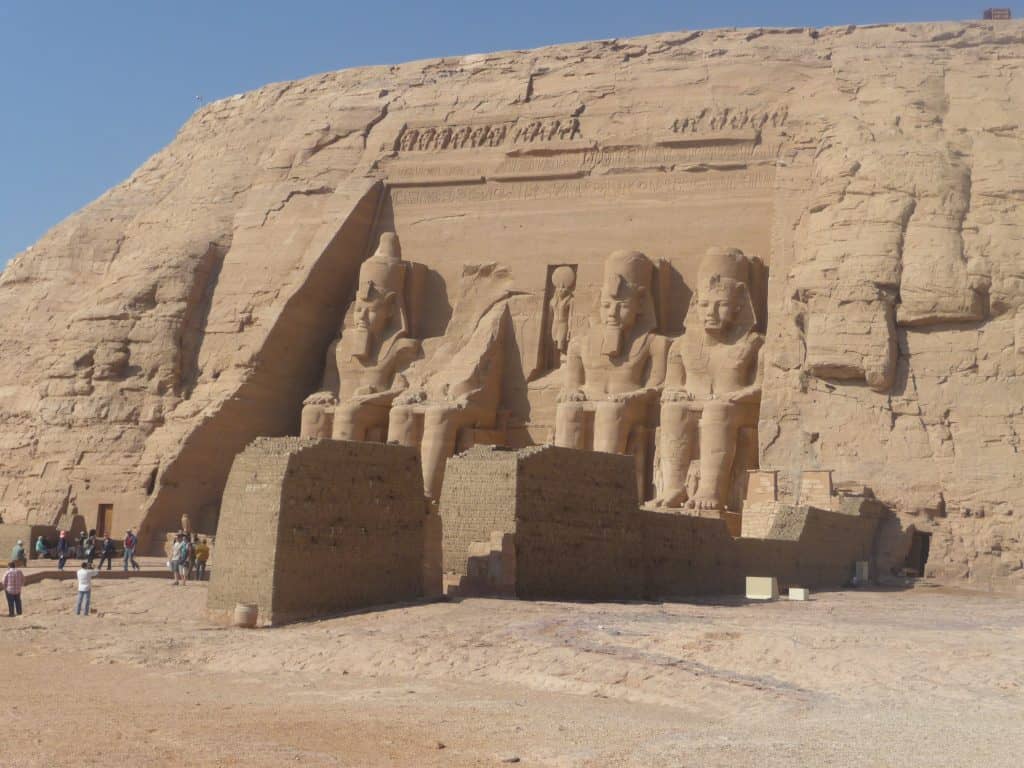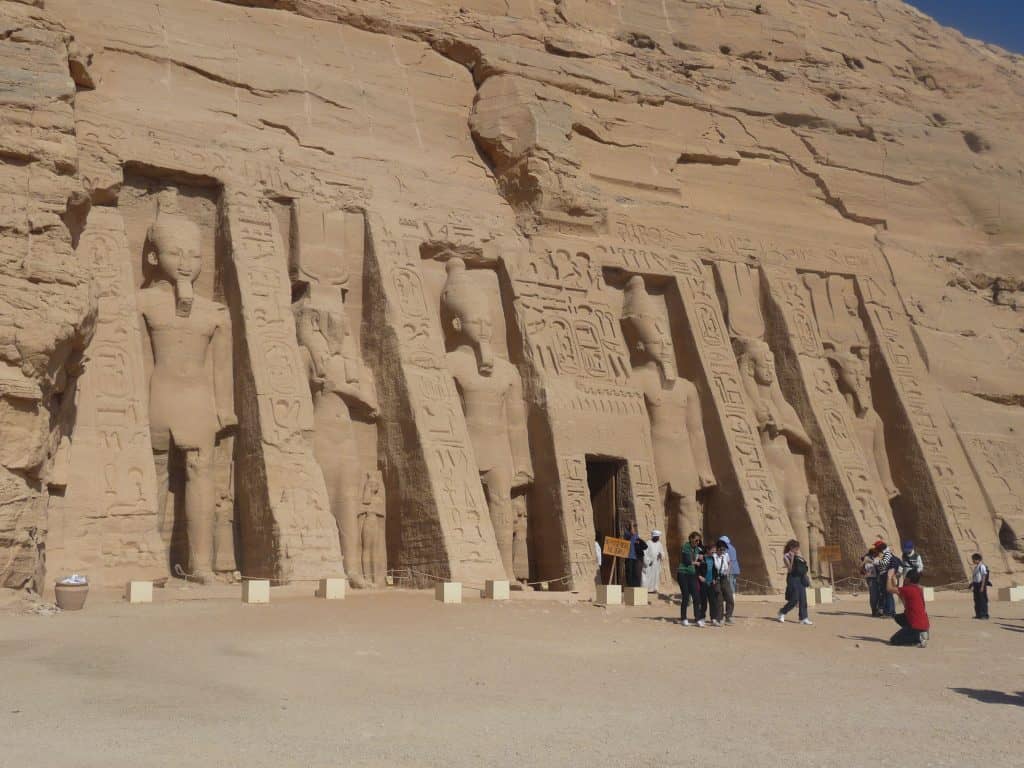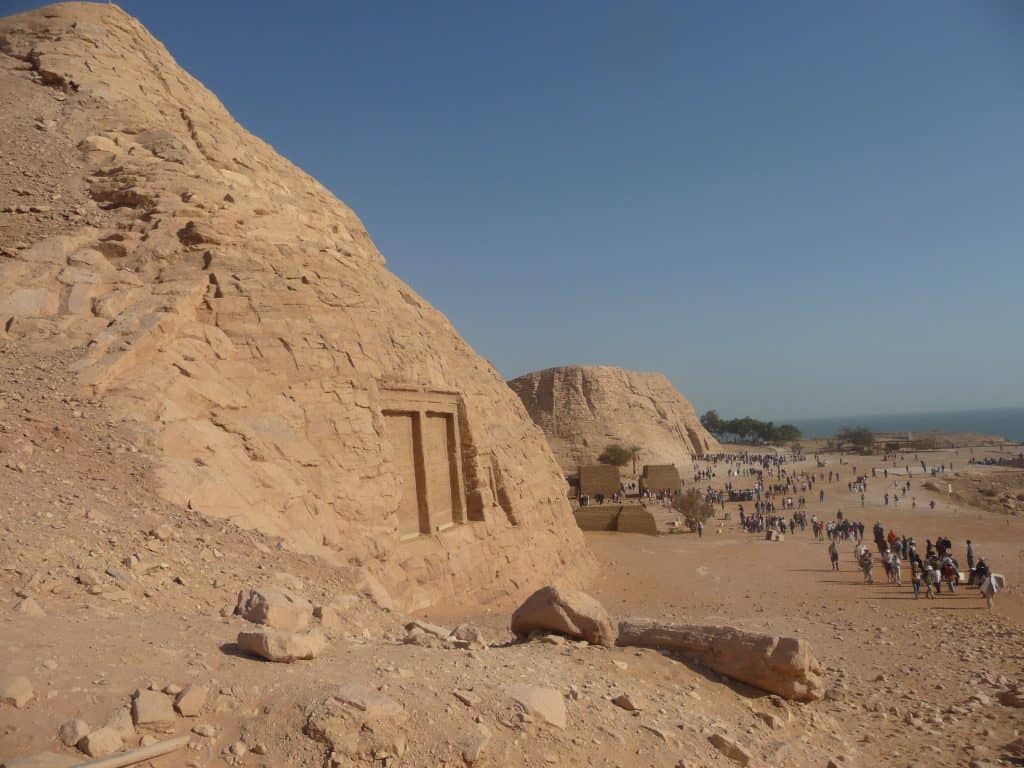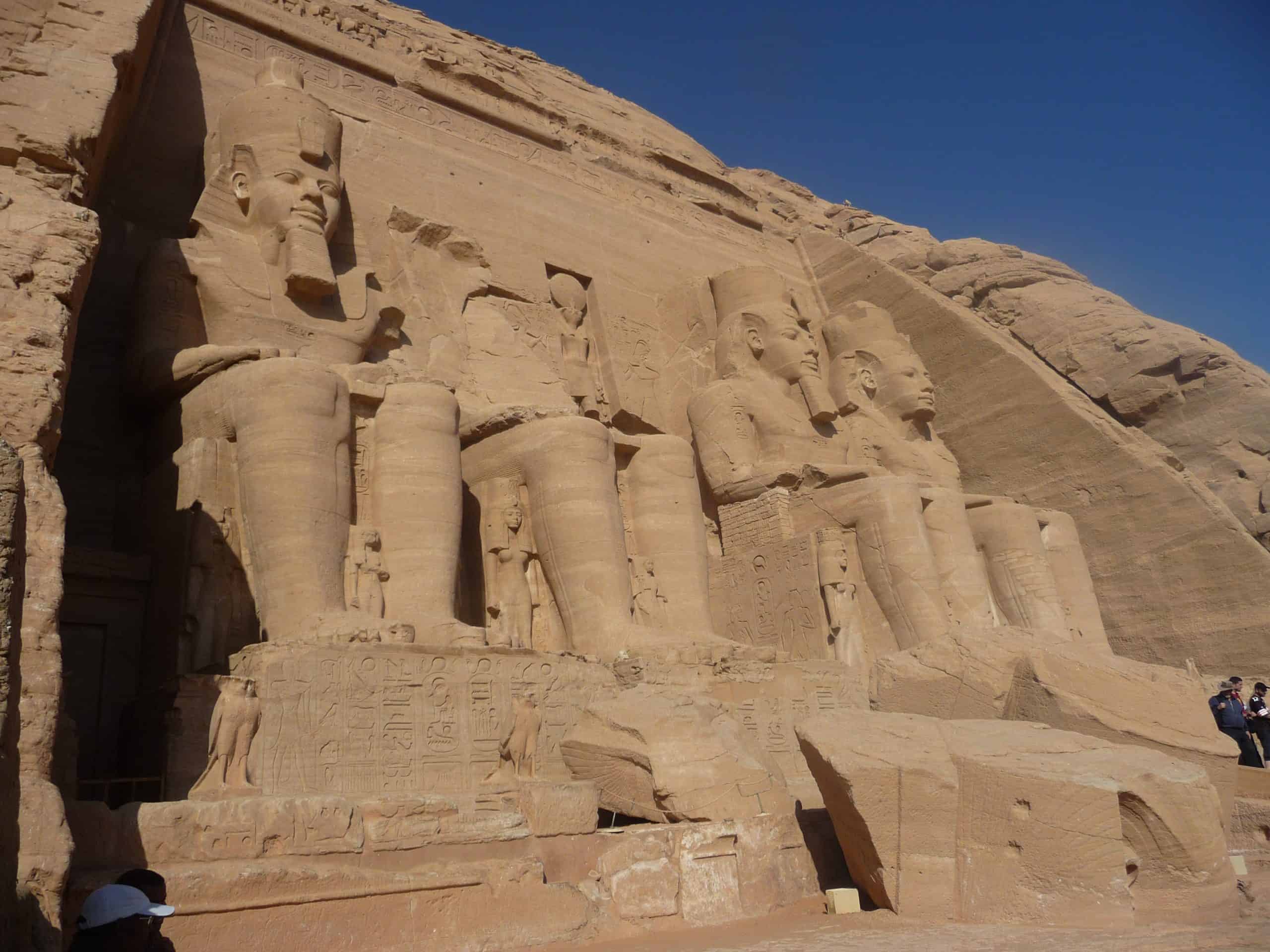
The Temple of Abu Simbel was strongly desired and built by Ramses II to celebrate his victory against the Hittites at the Battle of Kadesh in 1274 BC.
The temple was dedicated to a number of ancient Egyptian deities such as Ra-Horakhty, Ptah and Amon.
Abu Simbel was designed by Pharaoh also to be a testimony to his power that was never to be affected by time.
Ramses also did not want his temple to be destroyed by future kings and wanted to make his position as a true god eternal. This is also one of the reasons why the temples to him and his queen Nefertari were placed so far away, about 280 km south of Aswan, near the border with present-day Sudan.
The temples of Abu Simbel remained intact, covered by sand until 1813 thanks to the discovery of the Swiss archaeologist Burckhardt.
Work to bring Abu Simbel back to light began until the Italian archaeologist Giovanni Battista Belzoni first entered the complex in 1817.
In search of a way to eliminate the scourge of floods and droughts, the Egyptian government in 1960 set out to build the massive Aswan Dam.
In fact, the electricity provided and the guarantees against the Nile floods would have helped the country, but the artificial lake (Lake Nasser) that would have been created behind the dam would have wiped out Abu Simbel.
So in 1964, the Egyptian government together with UNESCO gave life to an incredible operation and decided to move Abu Simbel, saving him from the water of the Nile, 65 meters higher and 200 meters behind the original location.
Aided by UNESCO but also by a huge team of nations, the mighty and seemingly immovable temple complex was cut from the mountain, divided into numbered blocks one by one, moved and reassembled with millimeter precision where it is today.
The Abu Simbel complex consists of two temples: the Great Temple dedicated to the Pharaoh and the smaller one dedicated to Nefertari, his wife.
The Great Temple measures 30 meters high and 35 meters long and on the façade houses four colossi of King Ramses II seated on the throne.
Inside the Great Temple there are hieroglyphs that tell the stories, the military victories of Ramses II, his personal life alongside representations of ancient Egyptian deities. The whole complex is meant to venerate him, to affirm his position as something different from man.
The small temple was built for the Egyptian queen Nefertari, the most beloved wife of Ramses II. Little Temple also has a façade with four large colossi, two of Ramses II and two of Nefertari.
The walls of this temple show images of Pharaoh and Nefertari praying to the gods.

